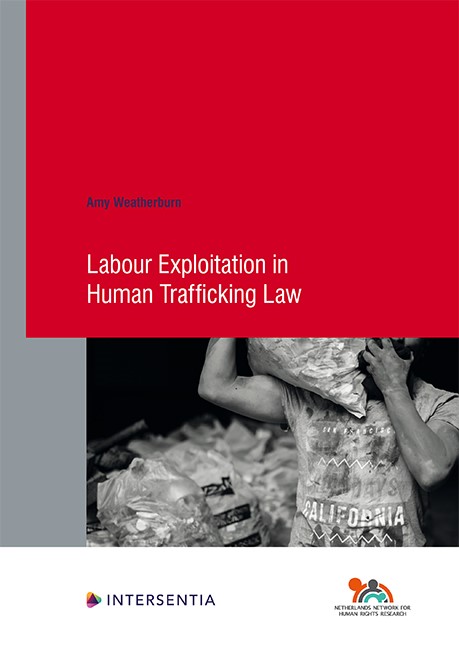Book contents
- Frontmatter
- Foreword
- Contents
- List of Abbreviations
- List of Tables
- Introduction
- PART I Exploitation in Political Theory
- PART II Labour Exploitation in Law
- PART III Labour Exploitation In The Criminal Law Of Belgium And England And Wales
- PART IV Conceptualising Labour Exploitation In Human Trafficking Law
- Conclusion
- Annex 1 List of Cases Accessed in Belgium and England and Wales
- Annex 2 Nationality of Victims and Civil Parties
- Bibliography
- Human Rights Research Series
Chapter 9 - The Judicial Qualification of Labour Exploitation in Law: the Role of Indicators
Published online by Cambridge University Press: 10 December 2021
- Frontmatter
- Foreword
- Contents
- List of Abbreviations
- List of Tables
- Introduction
- PART I Exploitation in Political Theory
- PART II Labour Exploitation in Law
- PART III Labour Exploitation In The Criminal Law Of Belgium And England And Wales
- PART IV Conceptualising Labour Exploitation In Human Trafficking Law
- Conclusion
- Annex 1 List of Cases Accessed in Belgium and England and Wales
- Annex 2 Nationality of Victims and Civil Parties
- Bibliography
- Human Rights Research Series
Summary
Whilst the previous chapter is both illustrative of the judicial interpretation of the material scope of labour exploitation and crucial to the conceptualisation of labour exploitation in law proposed in the next chapter (see Chapter 10), it is vital to acknowledge the practical way in which the judiciary qualifies the threshold of labour exploitation. With this in mind, this chapter discusses two instances where a judge will qualify the factual circumstances before them using indicators: first, when determining the nature of exploitation (does it exist or not?) and second, when assessing the degree of exploitation (the severity or harm). This chapter presents a nuanced perspective of the national law in action as it is not yet clear from the supranational jurisprudence whether the parameters of Article 4 comprise an understanding of exploitation that is premised upon a minimum threshold of severity. The inclusion of these emergent findings is therefore of importance as they reveal that ultimately, in practice, the qualification of a situation as labour exploitation is achieved by the courts assessment of the situation with the assistance of “indicators.” In particular, the courts use indicators as grounds for their judicial reasoning when deciding whether elements of the material scope of exploitation can be derived from the factual circumstances, including for instance, the means of coercion used to exercise of control. Furthermore, this discussion extends beyond merely the judicial interpretation of the law, and is also applicable to other actors who play a role in the administration of the criminal justice process, such as law enforcement authorities, prosecutors and, labour inspectors etc.
THE JUDICIAL USE OF INDICATORS TO QUALIFY THE NATURE OF LABOUR EXPLOITATION
The domestic case law analysis reveals that indicators are frequently referred to when interpreting the factual circumstances in order to determine the existence of exploitation. These indicators are operationalised by the judiciary in order to determine the ‘level of quality of life protected by respect for others and a human existence whose basic preventions are guaranteed.’ Importantly, a combination of indicators is used to determine the exploitative nature of the living and working conditions. Very seldom will single factors alone lead to a conclusion that a situation amounts to exploitation.
- Type
- Chapter
- Information
- Labour Exploitation in Human Trafficking Law , pp. 225 - 238Publisher: IntersentiaPrint publication year: 2021
- 1
- Cited by



